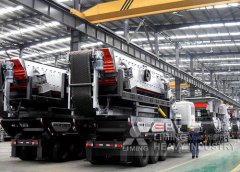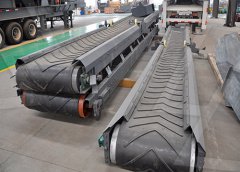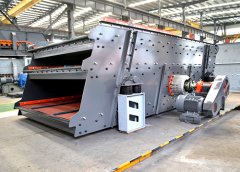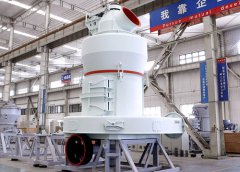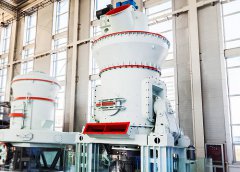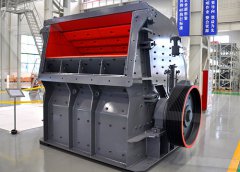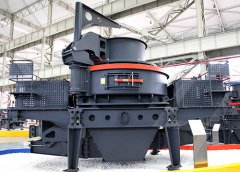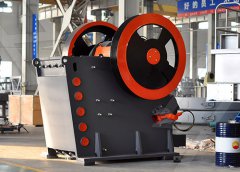
Rolling operation in metal forming: Process and principles
Rolling is a process used to shape metal into a thin long layer by passing it through a gap of two rollers rotating in different directions (clockwise and anti 2 Principles and Applications of Metal Rolling (ii) Shape of the rolled product- flat, sections or hollow sections rolling. (iii) Direction of rolling- lengthwise, transverse, and skew Introduction to Rolling Process Cambridge University
احصل على السعر
Rolling operation in metal forming: Process and principles A brief
Rolling is a process used to shape metal into a thin long layer by passing it through a gap of two rollers rotating in different directions (clockwise and anti-clockwise) Definition of Rolling Process Rolling is the most important metal forming process. More than 95% of ferrous and non-ferrous metals and alloys are processed to their usable shapes by rolling.Introduction to Rolling Process (Chapter 1) Principles
احصل على السعر
Mechanics of Rolling (Chapter 2) Principles and
Characteristics of Rolling. In order to understand the rolling process, it is essential to understand some of the terms characterizing the rolling process, which Rolling is the most widely used deformation process. It consists of passing metal between two rollers, which exert compressive stresses, reducing the metal thickness. Where simple shapes are to be made in large quantity, 17.2: Rolling Engineering LibreTexts
احصل على السعر
Rolling operation in metal forming: Process and
PDF A brief study on rolling operation in metal forming and equipment has been conducted. The manufacturing disposition, whether in small, and large Find, read and cite all the research youStudying the motion and load-bearing characteristics of the planetary roller screw mechanism is the basis for the structural design and performance optimisation of the mechanism. The mechanical structures Machines Free Full-Text Review on Motion and Load
احصل على السعر
Static vs Vibratory Roller: Differences & Which to Choose
The rollers utilize the weight and other working principles to compact soils to required densities. Based on how they work, rollers are classified into static and vibratory rollers. Construction projects have varied compaction needs. Rollers are designed to meet requirements that they are suited for.Rolling is a process used to shape metal into a thin long layer by passing it through a gap of two rollers rotating in different directions (clockwise and anti-clockwise) [5].The gap between the two rollers is supposed to be smaller than the thickness of the working piece of material to be formed.Rolling operation in metal forming: Process and principles A
احصل على السعر
Objectives of sanforizing process (zero-zero
Structure and working principle of sanforizing or zero-zero machine: The main parts and their functions of the sanforizing machine are given below: Inlet J-scray: The inlet J-scray is used to store the fabric Studying the motion and load-bearing characteristics of the planetary roller screw mechanism is the basis for the structural design and performance optimisation of the mechanism. The mechanical structures and working principles of different kinds of planetary roller screw mechanisms are summarised. Published papers on kinematic, Machines Free Full-Text Review on Motion and Load-Bearing
احصل على السعر
The Ultimate W24S Hydraulic Profile Bending Machine Manual
The W24S series rolling machine is a hydraulic three-roller profile bending machine that is mainly used for bending various steel profiles. It is capable of rolling “O” spiral-shaped workpieces and is widely used in industries such as petroleum, chemicals, shipbuilding, metalworking, and machine manufacturing. 2. Main Technical Data.The recirculating planetary roller screw mechanism (RPRSM) is a transmission mechanism that engages the screw and nut threaded by multiple grooved rollers. In this paper, firstly, the design method of RPRSM nut threadless area is proposed, and the equations related to the structural parameters of nut threadless area are Design and Dynamic Analysis of the Recirculating Planetary Roller
احصل على السعر
Road Roller Types, Components, Principles and Operation
Together, these components ensure the efficient operation and maneuverability of the road roller on construction sites. Frame and axles. The frame and axles are crucial parts of a road roller, providing structural integrity, stability, and maneuverability. The frame serves as the backbone, supporting the weight of the roller The working principle of a 4-roll plate bending machine involves the application of force to the metal plate through the use of rollers. The top and bottom rollers apply pressure to the metal plate from above and below, while the side rollers provide additional support and help to prevent distortion during the bending process.4-roll plate bending machine structure and working principle
احصل على السعر
Load Analysis and Power Calculation for 4 Roll Bending
Four Roll Bending Machine Structure and Working Principle. The rolling machine operates based on the principle of three-point forming, utilizing the relative position change and rotational motion of the working roll to produce continuous elastoplastic bending and achieve the desired shape and precision of the workpiece.. The structure 3. Main Structure and Working Principle of Plate Roll Bending Machine. 3-1. This is a symmetric roll-bending machine. The cylinder rolling is accomplished through the upper roller pressing against the lower roller, with both rollers participating in the rolling process. This is depicted in Drawing 3-1. 3-2.W11F Three Roller Roll Bending Machine: Expert Guide
احصل على السعر
Plate Rolling Machine Definition, Types, Parts, Working Principle
Definition of Plate Rolling Machine. Plate Rolling Machine Definition, Types, Parts, Working Principle & Advantages :-The plate rolling machine is a type of metal forming machine which utilizes work rollers to produce sheet metal round processing and forming.The plate rolling machine is also known by plate bending roller.The spinner mechanism has a variety of structural forms [5,6], but the working principle of the spin action is basically similar among each form.After the drilling tool is held tightly, torque is applied by the Applied Sciences Free Full-Text Study on the
احصل على السعر
Rolling Process: Definition, Working, Applications,
Working Principle of Rolling Process: The rolling process is a metal-forming process, in which a stock of the material is passed between one or more pairs of rollers to reduce and maintain the uniform Principles of rolling Rolling is a process used to shape metal into a thin long layer by passing it through a gap of two rollers rotating in different direc- tions (clockwise and anti-clockwise) [5]. The gap between the two rollers is supposed to be smaller than the thickness of the working piece of material to be formed.Rolling operation in metal forming: Process and principles
احصل على السعر
What is Rolling Process: Definition, Working, Types, Defects
Rolling Process is a deformation process in which Metal (s) in its semi-finished or finished form is passed between the two opposing rollers, which reduces the metal’s thickness through the compression process. The rollers rolls around the metal as it squeezes in between them. 3. Working Principle of Rolling. The Rolling Process consists ofThe vertical roller mill is a kind of grinding machine for cement, raw material, cement clinker, slag and coal slag. It has the benefits of simple structure and low cost of manufacture and use. Vertical roller mills have many different forms, but they work basically the same. All of these forms come with a roller (or the equivalent of rollerVertical roller mill
احصل على السعر
Rolling Process: Types, Working, Terminology and Application
Thread or Gear Rolling: This process is used to cut threads or gear on cylindrical blank. In this process threaded dies are fitted on cylindrical rollers of rolling machine. This threaded roller pressed against cylindrical blank and roll against the faces which displace the material and form threads on cylindrical blank.It features two working rollers and two or more backup rollers. The number of backup rollers depends on the required support for working. It is primarily used in cold rolling operations. Fig 5: Cluster Mill. Multi-High Roll Mill. It utilises two small-diameter working rollers and an intermediate row of driving rolls and backup rollers.Rolling Metal Forming-Working, Types, Advantages and
احصل على السعر
Guide Roller an overview ScienceDirect Topics
Guide rollers, one of the main parts of ring rolling machine, are controlled by a hydraulic adjustment mechanism. The typical guide roller adjustment mechanism is shown in Figure 11. It is symmetrical about the symmetry plane of the ring rolling mill and comprises two parts: linkage assembly and hydraulic ram. The guide roller arms rotate roundThe machine consists of a turntable, a rope de-twister, a drop stitch sensing slitting unit with draw rollers and a plaiting unit. The equipment is mounted on its own structure for smooth operation. The Twist Detector consists of 2 sensor rollers and one proximity sensor. The turntable arrangement with its drive offers smooth and fast Slitting Machine: Parts, Function, Parameters and Working Principle
احصل على السعر
